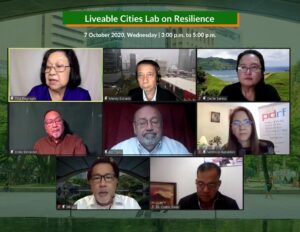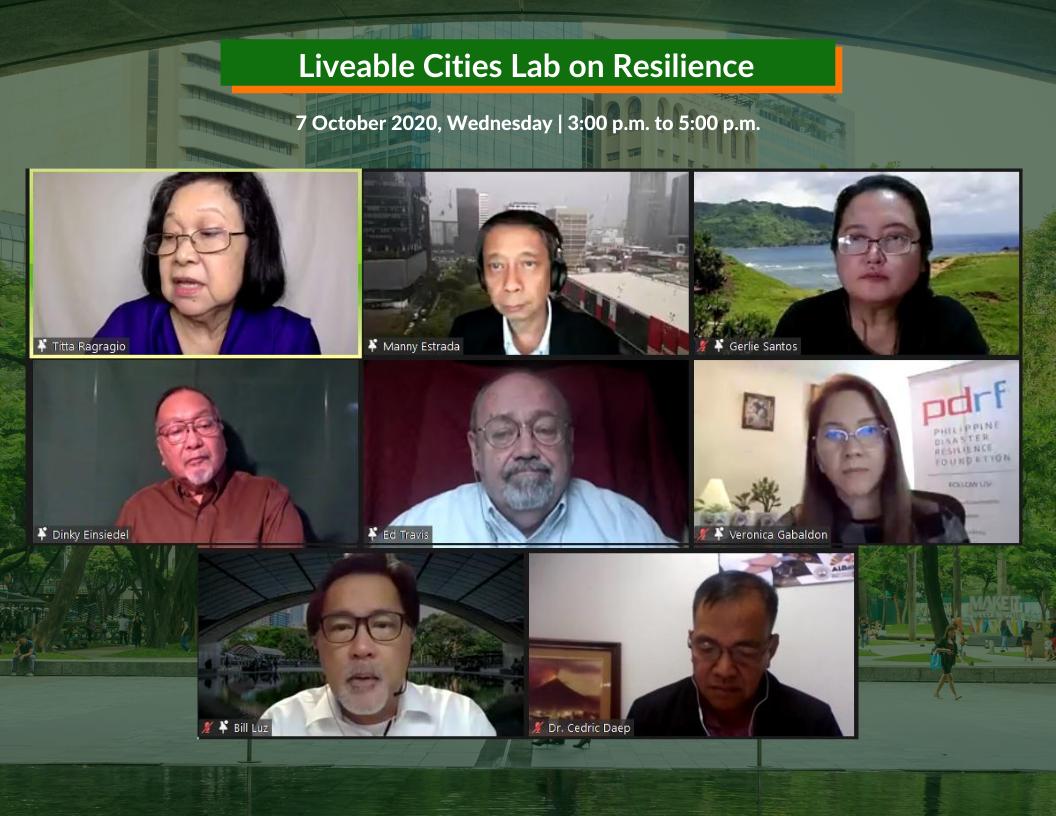Based on the consensus and inputs made on the latest LCC Labs Webinar Series hosted by the Liveable Cities Philippines and the League of Cities of the Philippines and in partnership with Globe, good preparation and a sound communication system are the key elements in making local government units resilient to natural disasters and calamities.

As shown and proven by the Albay Provincial Government, preparing early for a forthcoming typhoon or tropical storm is very effective in mitigating their effects on the province. Albay is a credible source on how other LGUs can be disaster-ready and resilient because of its vast experience and having a Zero Casualty Formula since 1991 on how to address natural calamities like typhoons and volcanic eruptions courtesy of Mt. Mayon.
The Provincial Government likewise is making the most of connectivity, through the help of social media for example, in communicating its warnings and updates to all Albay residents. By sending early guidelines that contain simple and relatable information, Albay is a model province in the country when it comes to disaster preparedness.
“One of the key things that we have learned from all these years is that it is better to evacuate people early instead of doing rescue missions while the calamity is ongoing,” Dr. Cedric Daep, Department Head-Albay Provincial Public Safety & Emergency Management Office, said.
This sentiment was echoed by other speakers during the webinar that included Emmanuel Estrada, Globe SVP for Technology Strategy & Service Integration; Geraldine Santos, VP of Alliance for Safe, Sustainable and Resilient Environments (ASSURE); Leonard Travis, Team Lead-Urban and Regional Planning, Empark Land Development Inc.; and Veron Gabaldon, the Executive Director of the Philippine Disaster Resilience Foundation.
For his part, Estrada spoke on how Globe can help LGUs build their own resilient network using the latest technology and at the same time running them efficiently while being sustainable too.
“Resiliency is not simply about being able to recover after an unexpected or disruptive event. It’s about having the right framework to begin with and complementing it with continuity and sustainable initiatives. For Globe, it requires a holistic development with the future in mind and and the well-being of all the members of the community the network serves by providing connectivity. Wholistic because it’s not just about technology but processes and people’s readiness as well,” Estrada explained.
This makes it necessary for Globe to build better network infrastructure and invest in backup solutions while continuously assessing risks and impact to ensure that it can provide telecom services to affected areas.
“Our focus is on ensuring business continuity during disasters and extreme weather events. By initiating projects that allow Globe to effectively respond and recover from major disasters, we are able to help the government in their search and rescue efforts and at the same time, provide the much-needed communications service to the people, ” said Peter Tan, Globe SVP for Network Operations.
In worst case scenarios such as The Big One, Globe is prepared with the most ready-to-deploy and flexible solutions to provide communication needs in pre-defined government command centers and safe operating zones. Once established, the restoration of the network follows for wider area coverage.
These solutions include Cell Site on Wheels (COW) and Tower on Wheels (TOW) which can handle up to 1,000 simultaneous calls within a 3-5 kilometer radius; a full mobile cell phone network system called Cellular-on-a-LightTruck (COLT); mobile generators to provide the power requirements of COW, COLT etc.; and the innovative Network-in-a-Box (NIB), an actual cell site that can serve a considerable number of subscribers but can also be carried as a backpack by personnel. There is also a deployable mobile command center (MCC) where tactical roles can be performed to manage resources on the ground.
In addition to having a backup network, Globe also gives highest priority in supporting the government in its rescue operations by deploying emergency equipment and Globe personnel from a strategic location to the disaster area, by land and air. It has ready resources for emergency communication solutions to support customer requirements.
At the same time, Globe sends out geo-tagged disaster-related SMS alerts and cell broadcasts to customers, in collaboration with the National Disaster Risk Reduction and Management Council (NDRRMC). It has also forged partnerships with local government units, trade distributors, and the communities for the provision of free call, text, charging, and internet in disaster-affected areas; distribution of food packs; donation of mobile phones and prepaid load for emergency response; and other institutional donations.
For tropical cyclones, Globe is redesigning and retrofitting its towers along the typhoon path in compliance with the latest National Structural Code of the Philippines so that the towers would remain standing despite strong winds and heavy rains.
Globe is also equipping key sites which were identified as “first to recover and last to be disrupted”, with relevant access technologies and redundant transport facilities in the event of an area-wide outage.
For instance, it converts fiber optic cables from aerial to underground for improved connectivity as well as uses microwave facilities for redundancy. Since disasters are often accompanied by loss of electricity, Globe complements backup batteries with higher capacity generators to address prolonged commercial power outages.
While ensuring network resiliency, Globe, likewise, focuses on contributing towards climate change mitigation through fostering an organizational culture of resource conservation and actively taking part in reforestation activities. Globe is also committed to resource usage optimization and waste minimization with a focus on effective e-waste management.
Globe is committed to upholding the 10 United Nations Global Compact principles and 10 UN Sustainable Development Goals (UNSDGs). To learn more about Globe, visit www.globe.com.ph.




